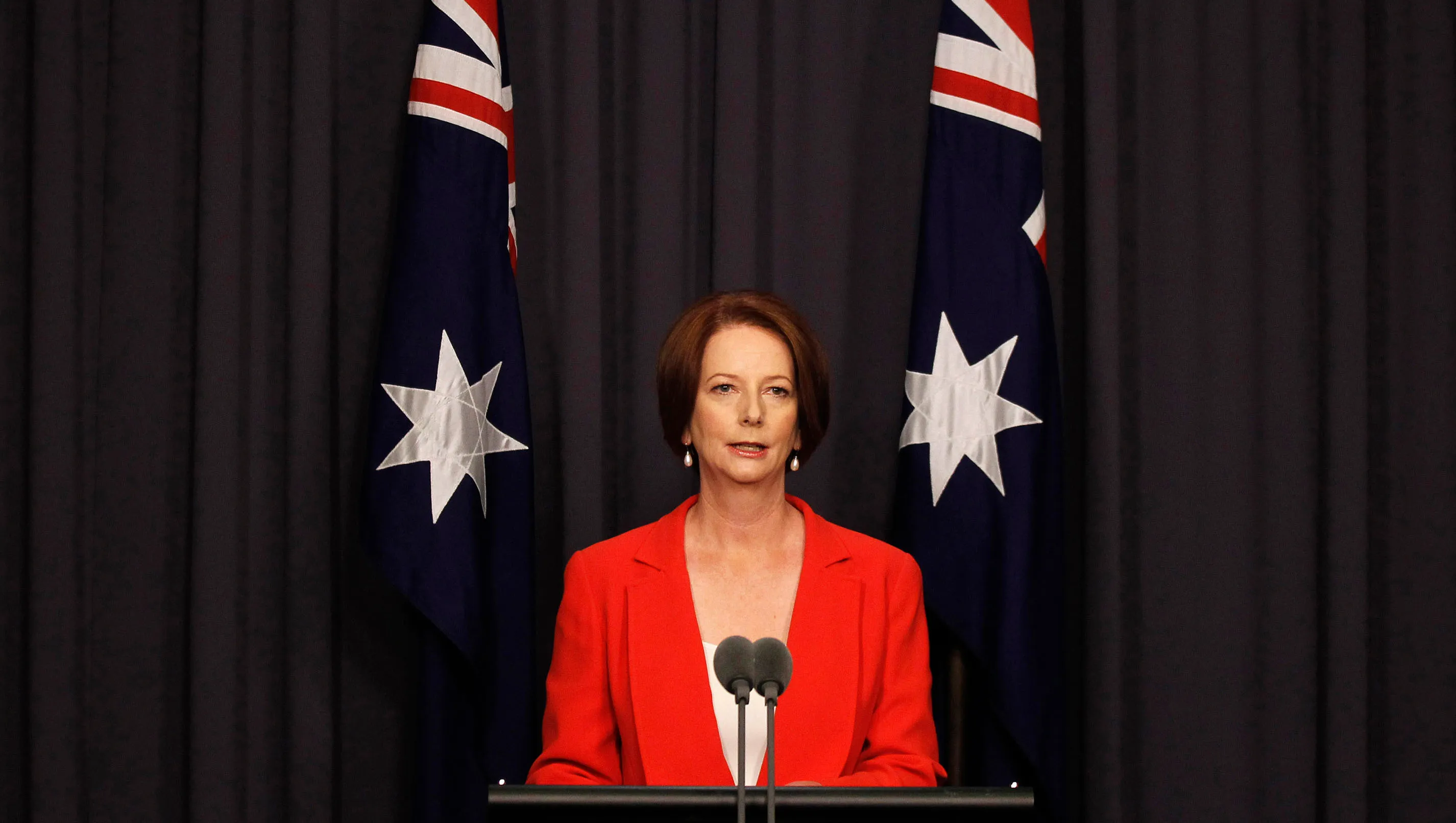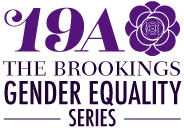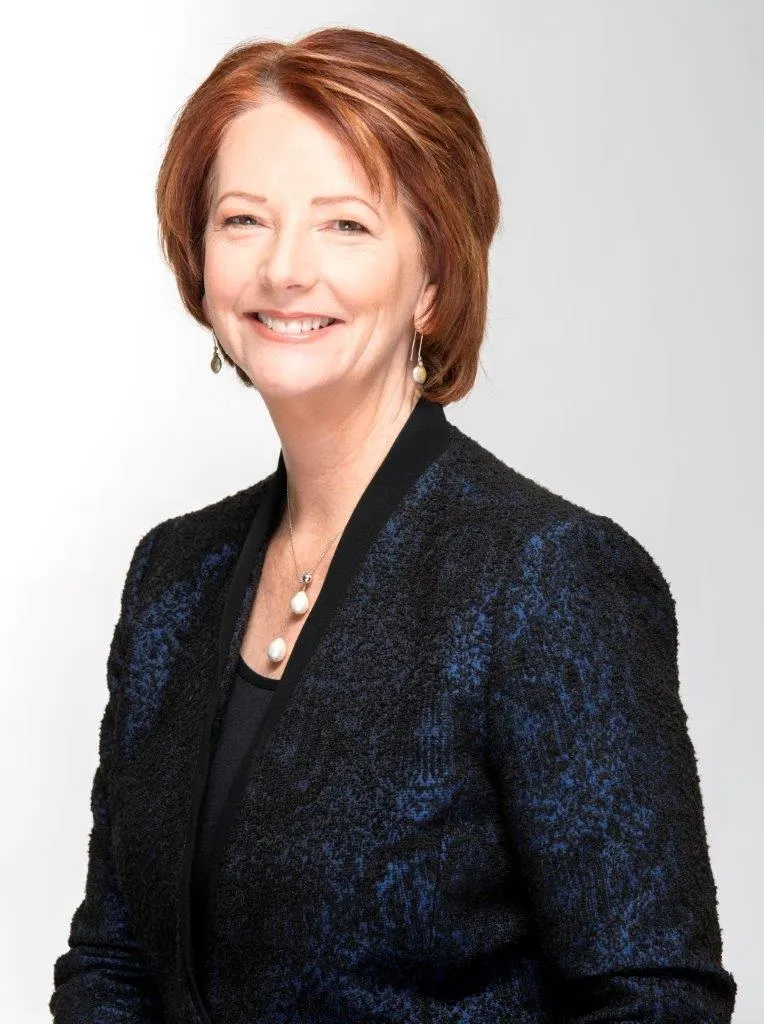
A global story
This piece is part of 19A: The Brookings Gender Equality Series. In this essay series, Brookings scholars, public officials, and other subject-area experts examine the current state of gender equality 100 years after the 19th Amendment was adopted to the U.S. Constitution and propose recommendations to cull the prevalence of gender-based discrimination in the United States and around the world.
The year 2020 will stand out in the history books. It will always be remembered as the year the COVID-19 pandemic gripped the globe and brought death, illness, isolation, and economic hardship. It will also be noted as the year when the death of George Floyd and the words “I can’t breathe” ignited in the United States and many other parts of the world a period of reckoning with racism, inequality, and the unresolved burdens of history.
The history books will also record that 2020 marked 100 years since the ratification of the 19th Amendment in America, intended to guarantee a vote for all women, not denied or abridged on the basis of sex.
This is an important milestone and the continuing movement for gender equality owes much to the history of suffrage and the brave women (and men) who fought for a fairer world. Yet just celebrating what was achieved is not enough when we have so much more to do. Instead, this anniversary should be a galvanizing moment when we better inform ourselves about the past and emerge more determined to achieve a future of gender equality.
Australia’s role in the suffrage movement
In looking back, one thing that should strike us is how international the movement for suffrage was though the era was so much less globalized than our own.
For example, how many Americans know that 25 years before the passing of the 19th Amendment in America, my home of South Australia was one of the first polities in the world to give men and women the same rights to participate in their democracies? South Australia led Australia and became a global leader in legislating universal suffrage and candidate eligibility over 125 years ago.
This extraordinary achievement was not an easy one. There were three unsuccessful attempts to gain equal voting rights for women in South Australia, in the face of relentless opposition. But South Australia’s suffragists—including the Women’s Suffrage League and the Woman’s Christian Temperance Union, as well as remarkable women like Catherine Helen Spence, Mary Lee, and Elizabeth Webb Nicholls—did not get dispirited but instead continued to campaign, persuade, and cajole. They gathered a petition of 11,600 signatures, stuck it together page by page so that it measured around 400 feet in length, and presented it to Parliament.
The Constitutional Amendment (Adult Suffrage) Bill was finally introduced on July 4, 1894, leading to heated debate both within the houses of Parliament, and outside in society and the media. Demonstrating that some things in Parliament never change, campaigner Mary Lee observed as the bill proceeded to committee stage “that those who had the least to say took the longest time to say it.”1
The Bill finally passed on December 18, 1894, by 31 votes to 14 in front of a large crowd of women.
In 1897, Catherine Helen Spence became the first woman to stand as a political candidate in South Australia.
South Australia’s victory led the way for the rest of the colonies, in the process of coming together to create a federated Australia, to fight for voting rights for women across the entire nation. Women’s suffrage was in effect made a precondition to federation in 1901, with South Australia insisting on retaining the progress that had already been made.2 South Australian Muriel Matters, and Vida Goldstein—a woman from the Australian state of Victoria—are just two of the many who fought to ensure that when Australia became a nation, the right of women to vote and stand for Parliament was included.
Australia’s remarkable progressiveness was either envied, or feared, by the rest of the world. Sociologists and journalists traveled to Australia to see if the worst fears of the critics of suffrage would be realised.
In 1902, Vida Goldstein was invited to meet President Theodore Roosevelt—the first Australian to ever meet a U.S. president in the White House. With more political rights than any American woman, Goldstein was a fascinating visitor. In fact, President Roosevelt told Goldstein: “I’ve got my eye on you down in Australia.”3
Goldstein embarked on many other journeys around the world in the name of suffrage, and ran five times for Parliament, emphasising “the necessity of women putting women into Parliament to secure the reforms they required.”4
Muriel Matters went on to join the suffrage movement in the United Kingdom. In 1908 she became the first woman to speak in the British House of Commons in London—not by invitation, but by chaining herself to the grille that obscured women’s views of proceedings in the Houses of Parliament. After effectively cutting her off the grille, she was dragged out of the gallery by force, still shouting and advocating for votes for women. The U.K. finally adopted women’s suffrage in 1928.
These Australian women, and the many more who tirelessly fought for women’s rights, are still extraordinary by today’s standards, but were all the more remarkable for leading the rest of the world.
A shared history of exclusion
Of course, no history of women’s suffrage is complete without acknowledging those who were excluded. These early movements for gender equality were overwhelmingly the remit of privileged white women. Racially discriminatory exclusivity during the early days of suffrage is a legacy Australia shares with the United States.
South Australian Aboriginal women were given the right to vote under the colonial laws of 1894, but they were often not informed of this right or supported to enroll—and sometimes were actively discouraged from participating.
They were later further discriminated against by direct legal bar by the 1902 Commonwealth Franchise Act, whereby Aboriginal and Torres Strait Islander people were excluded from voting in federal elections—a right not given until 1962.
Any celebration of women’s suffrage must acknowledge such past injustices front and center. Australia is not alone in the world in grappling with a history of discrimination and exclusion.
The best historical celebrations do not present a triumphalist version of the past or convey a sense that the fight for equality is finished. By reflecting on our full history, these celebrations allow us to come together, find new energy, and be inspired to take the cause forward in a more inclusive way.
The way forward
In the century or more since winning women’s franchise around the world, we have made great strides toward gender equality for women in parliamentary politics. Targets and quotas are working. In Australia, we already have evidence that affirmative action targets change the diversity of governments. Since the Australian Labor Party (ALP) passed its first affirmative action resolution in 1994, the party has seen the number of women in its national parliamentary team skyrocket from around 14% to 50% in recent years.
Instead of trying to “fix” women—whether by training or otherwise—the ALP worked on fixing the structures that prevent women getting preselected, elected, and having fair opportunities to be leaders.
There is also clear evidence of the benefits of having more women in leadership roles. A recent report from Westminster Foundation for Democracy and the Global Institute for Women’s Leadership (GIWL) at King’s College London, shows that where women are able to exercise political leadership, it benefits not just women and girls, but the whole of society.
But even though we know how to get more women into parliament and the positive difference they make, progress toward equality is far too slow. The World Economic Forum tells us that if we keep progressing as we are, the global political empowerment gender gap—measuring the presence of women across Parliament, ministries, and heads of states across the world—will only close in another 95 years. This is simply too long to wait and, unfortunately, not all barriers are diminishing. The level of abuse and threatening language leveled at high-profile women in the public domain and on social media is a more recent but now ubiquitous problem, which is both alarming and unacceptable.
Across the world, we must dismantle the continuing legal and social barriers that prevent women fully participating in economic, political, and community life.
Instead of trying to “fix” women—whether by training or otherwise—the ALP worked on fixing the structures that prevent women getting preselected, elected, and having fair opportunities to be leaders.
Education continues to be one such barrier in many nations. Nearly two-thirds of the world’s illiterate adults are women. With COVID-19-related school closures happening in developing countries, there is a real risk that progress on girls’ education is lost. When Ebola hit, the evidence shows that the most marginalized girls never made it back to school and rates of child marriage, teen pregnancy. and child labor soared. The Global Partnership for Education, which I chair, is currently hard at work trying to ensure that this history does not repeat.
Ensuring educational equality is a necessary but not sufficient condition for gender equality. In order to change the landscape to remove the barriers that prevent women coming through for leadership—and having their leadership fairly evaluated rather than through the prism of gender—we need a radical shift in structures and away from stereotypes. Good intentions will not be enough to achieve the profound wave of change required. We need hard-headed empirical research about what works. In my life and writings post-politics and through my work at the GIWL, sharing and generating this evidence is front and center of the work I do now.
GIWL work, undertaken in partnership with IPSOS Mori, demonstrates that the public knows more needs to be done. For example, this global polling shows the community thinks it is harder for women to get ahead. Specifically, they say men are less likely than women to need intelligence and hard work to get ahead in their careers.
Other research demonstrates that the myth of the “ideal worker,” one who works excessive hours, is damaging for women’s careers. We also know from research that even in families where each adult works full time, domestic and caring labor is disproportionately done by women.5
In order to change the landscape to remove the barriers that prevent women coming through for leadership—and having their leadership fairly evaluated rather than through the prism of gender—we need a radical shift in structures and away from stereotypes.
Other more subtle barriers, like unconscious bias and cultural stereotypes, continue to hold women back. We need to start implementing policies that prevent people from being marginalized and stop interpreting overconfidence or charisma as indicative of leadership potential. The evidence shows that it is possible for organizations to adjust their definitions and methods of identifying merit so they can spot, measure, understand, and support different leadership styles.
Taking the lessons learned from our shared history and the lives of the extraordinary women across the world, we know evidence needs to be combined with activism to truly move forward toward a fairer world. We are in a battle for both hearts and minds.
Why this year matters
We are also at an inflection point. Will 2020 will be remembered as the year that a global recession disproportionately destroyed women’s jobs, while women who form the majority of the workforce in health care and social services were at risk of contracting the coronavirus? Will it be remembered as a time of escalating domestic violence and corporations cutting back on their investments in diversity programs?
Or is there a more positive vision of the future that we can seize through concerted advocacy and action? A future where societies re-evaluate which work truly matters and determine to better reward carers. A time when men and women forced into lockdowns re-negotiated how they approach the division of domestic labor. Will the pandemic be viewed as the crisis that, through forcing new ways of virtual working, ultimately led to more balance between employment and family life, and career advancement based on merit and outcomes, not presentism and the old boys’ network?
This history is not yet written. We still have an opportunity to make it happen. Surely the women who led the way 100 years ago can inspire us to seize this moment and create that better, more gender equal future.
- December 7,1894: Welcome home meeting for Catherine Helen Spence at the Café de Paris. [Register, Dec, 19, 1894]
- Clare Wright, You Daughters of Freedom: The Australians Who Won the Vote and Inspired the World, (Text Publishing, 2018).
- Clare Wright, You Daughters of Freedom: The Australians Who Won the Vote and Inspired the World, (Text Publishing, 2018).
- Janette M. Bomford, That Dangerous and Persuasive Woman, (Melbourne University Press, 1993)
- Cordelia Fine, Delusions of Gender: The Real Science Behind Sex Differences, (Icon Books, 2010)
This piece is part of 19A: The Brookings Gender Equality Series. Learn more about the series and read published work »




